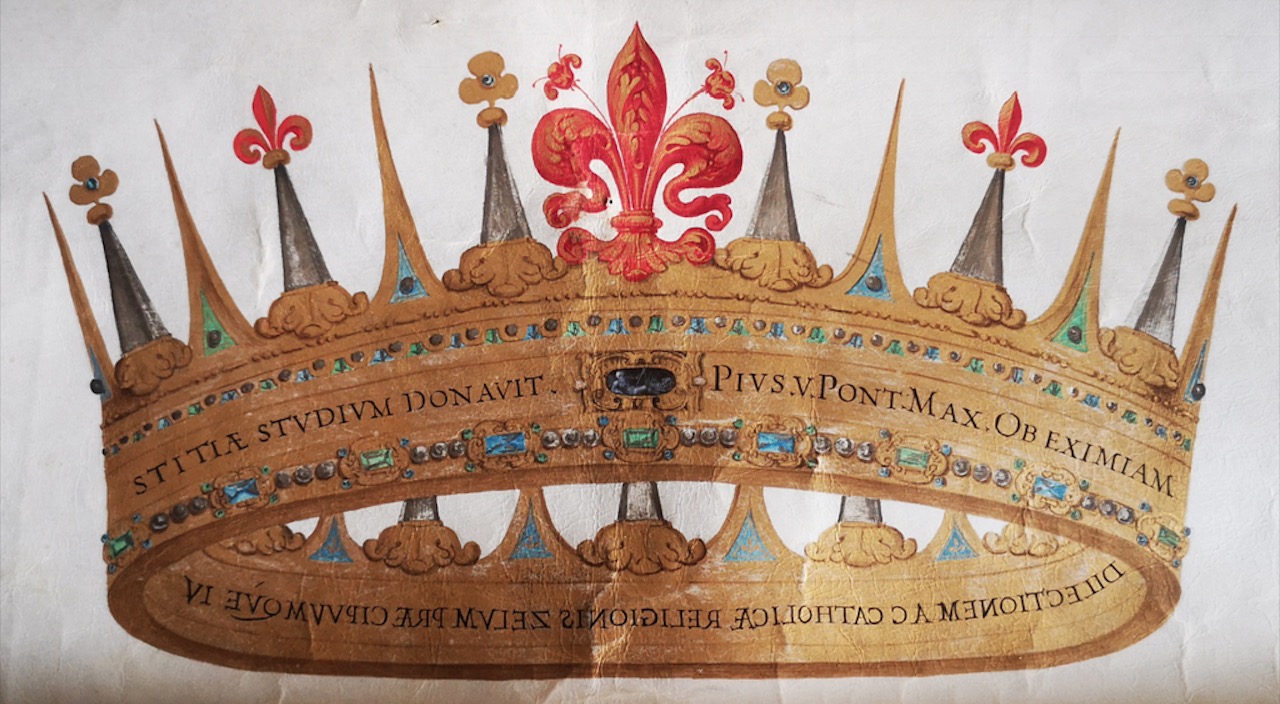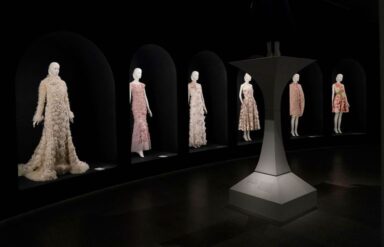The Medici family has landed in New York with the exhibition that opened the Metropolitan Museum of Art’s new season on 21 June.
“The Medici. Portraits and Politics. 1512-1570” will focuses on the power and patronage of the powerful Florentine family and will bringing overseas works by Raphael, Pontormo, Cellini, Titian, Sebastiano del Piombo, Francesco Salviati, Bronzino and many other artists of the Renaissance period
Text by: Domenico Costantini

Saint John the Baptist (Portrait of Giovanni de’ Medici)
By Agnolo Bronzino 1560–61
Oil on panel 47 1/4 × 36 1/4 in. (120 × 92 cm)
Galleria Borghese, Rome
This exhibition presents some of the key figures of the Medici dynasty, protagonists of a political game played from Rome, where members of the family occupied positions of power in the Catholic Church. Giovanni was elected Pope Leo X in 1513, and two years after his death, another Medici, Cardinal Giulio, became Pope as Clement VII (1523-34). In 1532 Alessandro de’ Medici – the alleged illegitimate son of Lorenzo, Duke of Urbino, but believed by detractors to have been fathered by Clement – became the first Duke of Florence.
The seventeen-year-old Cosimo was not the obvious choice to succeed Duke Alessandro de’ Medici, who was assassinated (by his cousin) in 1537. But there were few alternatives, and his lineage was not inconsequential: his mother was the granddaughter of Lorenzo the Magnificent and his father a military hero.
Some members of the government thought the young, untried Cosimo could be bent to their will. Instead, he seized power and defeated his opponents, employing the time-honored punishments of exile, imprisonment, and execution. His objective was to create a strong state, albeit one subservient to the Holy Roman Emperor.
Key to Cosimo’s success was his marriage in 1539 to Eleonora di Toledo, daughter of a Spanish viceroy with ties to Emperor Charles V. Considered an ideal consort, she was pious, bore eleven children, and served as regent during Cosimo’s absences. She was also a major—and demanding—patron of the arts.

Eleonora di Toledo and Francesco de’ Medici ca. 1550 by Agnolo Bronzino
Oil on panel 45 3/4 × 37 3/8 in. (116 × 95 cm)
Museo Nazionale di Palazzo Reale, Pisa
Image © Haltadefinizione® Image Bank by permission of the
Ministry of Cultural Activities and Heritage— Polo Museale della Toscana
Portraits of the ducal family were intended to project power, assert the continuity of the dynasty, and convey cultural refinement. Bronzino’s iconic images were replicated and given as diplomatic gifts to other rulers—part of Cosimo’s project to claim his place in the European scene.

Portrait of a Halberdier (probably Francesco Guardi)ca. 1528–30
by Jacopo da Pontormo
Oil, possibly mixed with tempera, on canvas, transferred from panel
37 1/2 × 28 3/4 in. (95.3 × 73 cm)
The J. Paul Getty Museum, Los Angeles
Image courtesy of the Getty’s Open Content Program
Poetry readings and critical analysis were a central practice at the Accademia Fiorentina, a prestigious literary institution sponsored by Duke Cosimo to promote his cultural agenda. At the deepest level, Florentine portraits emulate the modality of poetry, employing metaphor and artifice. Many of the sitters in this gallery were probably members of the Accademia.
Cosimo’s shrewd rule over his newly created duchy elevated Florence to a position of cultural preeminence. The sophisticated style practiced by its artists was acclaimed as the maniera moderna, or “modern manner.” The duke implemented an ambitious program that established the state of Tuscany as a “soft power.” This politics of culture encompassed not only the painted and sculpted portraits of Cosimo and his family, but also civic monuments and architecture that transformed Florence into a ducal capital.
Cosimo relentlessly crafted the image of his duchy as the epicenter of a cultural revival. His project was ideological, too, resulting in one of the most resilient narratives of Western history—that of the Renaissance, with Florence as its epicenter, a construct laid out in Giorgio Vasari’s two editions of the Lives of the Artists, dedicated to Cosimo.
In this profoundly literary culture, artists embraced allegory and metaphor to transform the basic task of portrayal into a poetic conceit. This is especially true of what have been described as “disguised portraits,” in which the sitter is presented in the guise of a mythological or sacred figure.

Florence Cosimo I de’ Medici as Orpheus, 1537–39 by Agnolo Bronzino
Oil on panel, 367/8 × 301/8 in. (93.7 × 76.4 cm)
Philadelphia Museum of Art; Gift of Mrs. John Wintersteen, 1950
Image: Courtesy Philadelphia Museum of Art
In the 1540s Francesco Salviati and Bronzino, along with Pontormo, were the dominant painters in Florence. At Cosimo’s behest, Bronzino and Salviati worked concurrently in the Palazzo Vecchio—the seat of the old republic that the duke, in a calculated act of appropriation, transformed into his residence.
Stylistically, the work of the two artists remained worlds apart. Bronzino’s portraits display a naturalism tempered by artifice and informed by an ideal of beauty deeply indebted to Michelangelo. By contrast, Salviati’s are animated by a cosmopolitan pictorial language derived from Venetian art, Parmigianino, and Raphael. His fame was Roman-based, not Florentine. Vasari praised Salviati as the master of the bella maniera, or “beautiful manner.” The extravagance of his style is far removed from the sober elegance that characterizes Bronzino’s work.

Florence Garzía de’ Medici ca. 1550 by Agnolo Bronzino
Oil on panel 18 7/8 × 15 in. (48 × 38 cm)
Museo Nacional del Prado, Madrid
Image: ©Photographic Archive, Museo Nacional del Prado, Madrid
This gallery provides a unique opportunity to compare the qualities of these equally gifted artists, both as painters and as draftsmen; to gauge their responses to each other’s work; and to sort out some debated attributions. The exhibition concludes with the juxtaposition of two surpassing masterpieces: Salviati’s painted and Cellini’s bronze portrait of the Florentine banker Bindo Altoviti, who remained one of the most significant opponents to Cosimo’s rule.

Bindo Altoviti ca. 1545 by Francesco Salviati
Oil on marble34 5/8 × 28 3/8 in. (88 × 72 cm) Private Collection
Photograph © Bruce M. White, 2020
CuRiOSItY:
Cosimo I’s propaganda aims also extended to the field of luxury, through clothes and jewellery, as an ostentation of a status symbol that functioned as a social marker intended to elevate his great figure.
- The Collar of the Golden Fleece, awarded to Cosimo by Charles V in 1546, is made up of 25 intertwined hairpins, alternating with elements that simulate flints surrounded by flames. The pendant reproduces the Fleece, related to the legend of the Golden Fleece – the Golden Fleece is an object found in Greek mythology that was said to have the power to heal any wound – the iconographic testimony is given to us by a portrait of the Duke in the Castello Odescalchi collection in Bracciano (1551).

Agnolo Bronzino
Portrait of Cosimo I Medici wearing
the precious collar of the Golden Fleece 1551
Oil on canvas (70x60cm)
Odescalchi Castle Collection, Bracciano
- The Grand Ducal Crown, found in the Papal Bull of Pius V dated 24 August 1569, kept in the State Archives of Florence: it has 19 points, alternating silver and gold with stones and decorative elements; in the centre flourishes the Florentine Lily, enamelled in red with gold highlights. Underneath is an astragal with beads and a frieze of denticles with enamelled pearls and ovules, while the central band bears the following chiselled and engraved inscription: -Pius V. Pont. Max. ob eximiam dilectionem ac catholicae religionis zelum praecipuumque iustitiae studim donavit – Pius V, Supreme Pontiff, donated this work for his exceptional devotion and zeal towards the Catholic religion and for his very special love of justice. In the centre of the band is a cameo in sardonyx chalcedony, on which the personification of the river Arno is carved. Underneath there is a moulding with emeralds and iolites in bezels, spaced out by pearls.

Drawing in the Papal Bull of Pius V of 24 August 1569, Florence State Archives
- The Grand Duchess’ dress: in crimson velvet, it is linked to the name of Eleonora of Toledo, although it is not clear whether or not the precious dress was part of the wardrobe of Cosimo I’s wife. What is certain, however, is that the rich crimson velvet fabric, one of the most expensive of the time, was intended at least for her court: it was in fact the same tailor, mastro Agostino, who made the dresses for the duchess and her ladies. The style of the dress is reminiscent of that which Eleonora di Toledo, daughter of the viceroy of Naples, introduced to the Medici court. In addition to the tailoring chosen for the bust and skirt, there are, for example, the characteristic satin bands embroidered with interwoven gold cords, stylistic elements that often recur in the portraits of her by the court painter Agnolo Bronzino. The dress, now on display at the Met in New York, was found in the convent of San Matteo which, located on the banks of the Arno, kept the precious textile artefact for several centuries. In the 16th century, it was customary to donate jewellery and precious clothes to the cult statues, dressing the simulacra of the saints in fashionable clothes. For the images of the Virgin, in particular, it was decided to give a second life to clothes that had fallen into disuse, and it was precisely for this purpose that the rich crimson velvet fabric made for the Medici court was adapted to the small size of the wooden statue for which it was intended. . On this occasion, the train was so carefully folded and sewn inwards that the restorers were able to recover the original style of the dress in its entirety, making this dress a unique testimony to the fashion in vogue at the Medici court in the mid-16th century.

Petticoat with sleeves, ca. 1560
Velvet, H. 59 in. (150 cm)
Museo Nazionale di Palazzo Reale, Pisa
Photo by Arrigo Coppitz, from the archive of the
Regional Directorate of Museums of Tuscany



